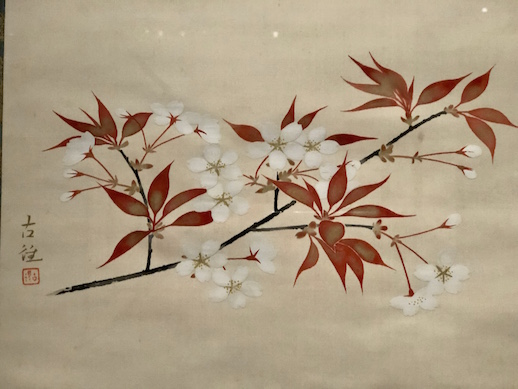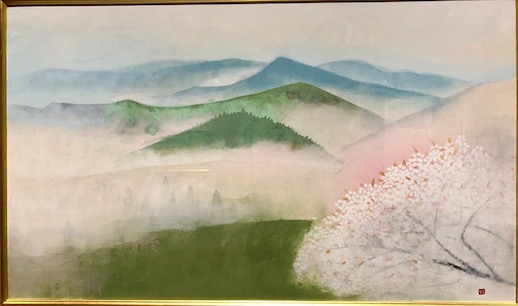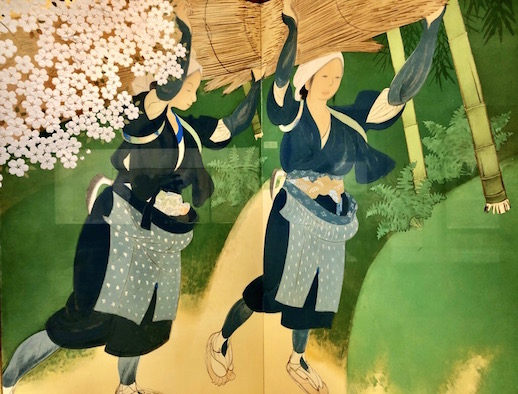Sakura, Sakura, Sakura 2020 – Flower Viewing at the Museum!
*Please note that due to Coronavirus, Yamatane Museum of Art is closed temporarily from April 4, 2020.
To Japanese artists seeking subject matter, sakura (cherry blossoms) have always been there to provide inspiration. Cherry trees have long grown wild in Japan. In the Heian period, aristocrats held cherry blossom parties and made outings in search of beautiful cherry trees in bloom. In the Edo period, a number of new varieties of cherry trees were bred, including the iconic Somei Yoshino. Hanami, cherry blossom viewing, became a widespread and much treasured custom.
The cherry tree has also long been a motif in Japanese prose, poetry and art, expressing the feelings aroused by the blossoms’ beauty and their fleeting life. Famous places, manners and customs, grand narratives: cherry trees play an almost-ubiquitous leading role in Japan. “Sakura, Sakura, Sakura 2020 – Flower Viewing at the Museum!” at Yamatane Museum of Art covers the symbol that is the cherry blossom and its importance throughout centuries of Japanese history. Around 50 artworks from the museum’s collection are on display.

The exhibition is split into three sections: ‘With the Cherry Blossoms’ introduces works that focus on the relationships between human beings and cherry blossoms. ‘Places Famous for Cherry Blossoms’ is self-explanatory, introducing works from notable cherry blossom locations in Tokyo, Kyoto, Nara, Wakayama and Tohoku amongst others. ‘Painting Cherry Trees’ presents works depicting the trees in many ways: landscapes with cherry blossoms in bloom, closeups of flowers and tree trunks and depictions of trees quietly blooming at night. We discover the cherry trees’ richly individual forms through the eyes of the artists.
The scenes are varied, depicting single trees, famous groves or just the blossoms themselves. Each painting reflects the artists’ feelings about the subject matter. Highlights include Shunso Hishida’s Women Viewing Cherry Blossoms, which depicts ladies gathered beneath the trees in full bloom. Meiji Hashimoto’s Cherry Tree in Morning Sun (pictured in upper-right thumbnail) addresses the Miharu Takizakura, a famous thousand-year-old cherry tree in Fukushima.

One of the many reasons that the blossoms are so popular is their changing appearance throughout the day – the subtle pink reflecting the morning sun, a bright white glow in the afternoon and the subdued calm palette of the evening. There are works capturing all these hues and more.
Speaking to the curator, Yukie Nagumo, and the director, Taeko Yamazaki, they highlighted two differences between the exhibition held two years ago and now. Firstly, the selection of more modern works from the museums collection and secondly, an increase in the number of works that focus on the interaction between people and the blossoms.
A good example of the modern works is Spring in Yoshino (1977) by Togyo Okumura (1889-1990). Mt Yoshino in Nara is covered with about 30,000 cherry trees of two hundred varieties. Okumura visited Yoshino three times, including trips there in autumn and to see the fresh green leaves of spring. On his first visit he was completely overwhelmed by the weight of history (“I could not see the whole” he said) and he cried as he created this piece.

Oharame, Women Peddlers (1915) by Bakusen Tsuchida (1887-1936) is a wonderful example of people interacting with the blossoms. Bakusen visited Yoshino and Ohara repeatedly to produce this painting. His extensive use of gold and malachite green pigment, his depiction of doha (rises in the ground) and his use of moriage (a relief-like effect with gofun, a white pigment made from pulverised seashells) applied to the the surface for the cherry blossoms, indicates the stylistic influence of Momoyama-period (16th century) painting. However, in his depiction of the Oharame (women peddlers from Ohara) we can sense his awareness of the works of Renoir and Cezanne. He was proud of his work: “I am convinced this is really good”, he said. Rightly so.

Cafe Tsubaki on the first floor offers wagashi (traditional Japanese sweets) inspired by some of the artworks. Made by the Kikuya confectionary, a shop in Aoyama dating back to 1935, this is a unique way to ‘taste’ the art, indulging in the full sensory experience of Japanese culture.
Cherry blossoms aren’t just aesthetically beautiful. They represent finitude, the ephemerality of life and the interconnectedness of Everything. We need the spirit of hanami now more than ever. It can help put our existence, and crisis, into perspective. The exhibition ends on 10 May, well after the famous Somei Yoshino blossoms have finished blooming in Tokyo, allowing those who miss outdoor hanami to conduct their own indoor flower viewing, travelling across time and geography.
Sei Shonagon, in her Heian-era classic Makura no Soshi (The Pillow Book), lists cherry blossoms under “Things that lose by being painted”, mentioning how difficult it is to paint them well. For over a thousand years, artists have struggled to communicate the cherry blossoms’ beauty in paintings. This exhibition showcases the culmination of that struggle, and some of its triumphs.
*All photographs by Jennifer Pastore
Mac Salman
Mac Salman



